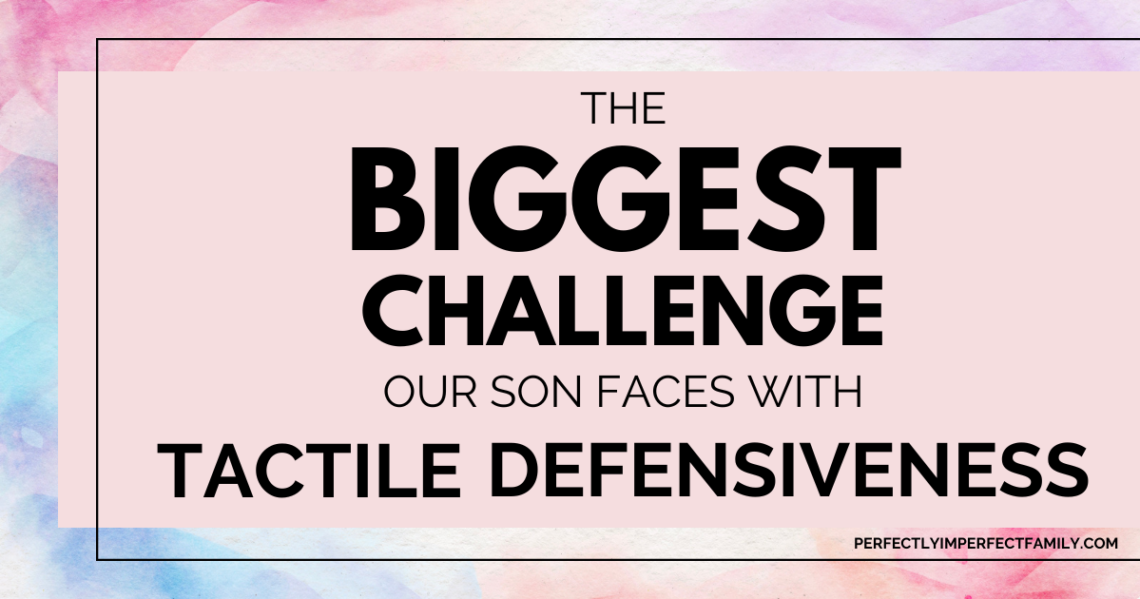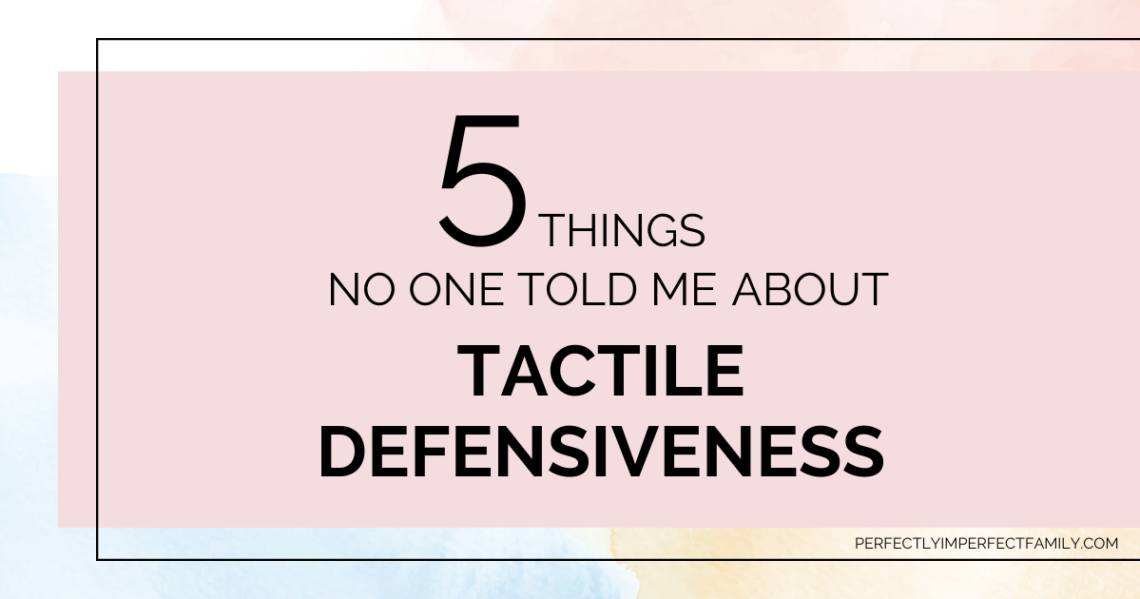Family
A place for posts about our family, our challenges, successes, and everything we do and enjoy. We hope to connect with others who face the same challenges we do and want people to see that they're not alone, that everyone doesn't live perfectly, and that we are all perfectly imperfect.
How We Celebrate Valentine’s Day
When my husband and I first married, we would go to dinner to celebrate Valentine’s Day like everyone else. Valentine’s Day seems to have only gotten more chaotic as we’ve grown older, and we have changed how our family celebrates this day.
I remember a Valentine’s Day when we used to go out to eat on Valentine’s Day. That year, we made a reservation at a restaurant that we loved, and when we got there, even though we had a reservation, the wait time for us to get in was an hour and a half.
We decided to go to a different restaurant to see if we could get in any faster. We discovered the restaurant’s wait time was just as long when we arrived. Eventually, we returned to the first restaurant and endured the hour-and-a-half wait. Let’s say that experience was not very fun for either of us. Ever since that Valentine’s Day, we have done things differently in our family.
These days, if my husband and I decide to go out on a date for Valentine’s Day, which we usually do, we will go out the week before Valentine’s Day so we don’t have to deal with crowds. Instead, we have the most fun involving our children in our celebration on Valentine’s Day.
We celebrate Valentine’s Day by having a very fancy family dinner. It is one of the only fancy dinners we have the whole year. On Valentine’s Day, my husband will get the girls a single rose and a treat for my son. We set the table in the evening and pull out all the stops. Usually, the girls are in charge of doing this. We have a unique tablecloth we use. We use special plates and have fancy glasses. There are flowers for centerpieces, and we light candles. The girls will make nametags for the place setting. They have so much fun setting the table and making it look like a fancy restaurant.
We make soup with pasta, a salad, and breadsticks. We also have sparkling cider as our drink. After dinner, we have a nice dessert. We have a good time sitting around our fancy table. The children seem more involved in the conversations and have better manners because they feel different.
This is a simple tradition, yet it is one of my favorites. I love that it gets the entire family involved. The kids also remember doing it year after year. It teaches the kids that Valentine’s Day isn’t just a holiday of loving your significant other, but it can be about how we love each other as a family. The biggest bonus of all is that the introvert in me gets to stay home and avoid all those crowded restaurants!! Which is a win in my book!
How do celebrate Valentine’s Day? Do you have any fun traditions that you have as a family? I would love to hear from you, so please leave a comment!
Things Our Kids Love Doing in St. George, Utah
One of our frequent vacation destinations is St. George, Utah. We took the kids there for spring break this past year. The weather was amazing. We were only there for four days, so we didn’t get to everything you could or would want to do. We could only do a few things, a few of which I wanted to share. Our kids love doing these things whenever we visit St. George, Utah.
Thunder Junction All Abilities Park
We don’t go to St. George very often, but when we do, this park is the number one place the kids always request to go to. It is an all-abilities park themed around dinosaurs. Our daughter is really into dinosaurs right now, so she loved all the dinosaurs at the park.
There are so many things to do at this park to entertain the little tikes and the little older kids. There are three major areas at this park. There are different playgrounds. They have a little section for toddlers and a section for the bigger kids. There are a few zip lines and some fun swings.
There is a splash pad. It has a waterfall and a little stream the kids can play in. The kids love to play in it. We don’t usually take swimsuits for this. The kids go back and forth between the splash pad and the playground, so we don’t worry about swimsuits. To warn you, the water is very cold at the splash pad.
My kid’s favorite part of the park is riding the train. It costs a dollar per person to ride, but I feel it is not too expensive. The kids love riding the train. It goes around the entire park. It takes you through rocks and a dinosaur bone tunnel.
I would plan on spending a couple of hours at this park. Also, make sure that you put on sunscreen.
Pioneer Park
We took our kids to Pioneer Park while in St. Geroge. This is where the famous Dixie Rock is located. You can spend hours climbing on all the rocks and exploring different places to climb. There is even a little slot canyon called Little Narrows, after The Narrows in Zion’s National Park, that you can climb up.
You can climb to the top of Dixie Rock. You have to climb up tiny makeshift stairs on the side of a rock to get to it, but it isn’t too bad. Our six-year-old was able to make it up and down. Pioneer Park is also connected to the Red Hills Desert Gardens. This is a fun place for the kids to explore and learn about all the plants that grow in the area. There is a parking lot for the gardens, or you can walk over from Pioneer Park. Once again, make sure that you wear sunscreen. You also want to make sure you take plenty of water.
Zion National Park
One of the days that we were in St. George, we decided to go to Zion National Park. It is about an hour’s drive, but it was worth it. We had to go online the night before and get shuttle reservations to travel within the park. Those were a dollar per person. They go very quickly, so you must ensure you get on and get your ticket right when it says. They sold out in about 4 minutes. If you don’t get a ticket, you can wait in line and get on a shuttle after 2:00. At least these were the rules, as far as I knew, because of COVID-19.
We only did two hikes before we ran out of time. The first hike we took was the Riverside Walk. This one was very easy for our 6-year-old. Many people were on this hike, so we felt a little rushed on it. Once we got to the top, we could sit and rest. Walking back was a little bit slower. There weren’t as many people going back down. The second hike we went on was to the Lower Emerald Pool. This one, as well, was pretty easy for our 6-year-old. The kids enjoyed trying not to get wet from the waterfall that fell into the pool. You can hike to the Upper Emerald Pool, but at this point, the kids were too tired and wanted to head back.
We also enjoyed getting ice cream at the lodge in between our hikes. We just sat on the lawn and enjoyed the beautiful view while we ate it. Another fun thing we did before entering the park was driving through the Zion-Mount Carmel Tunnel. It is 1.1 miles long. The kids thought this was cool. Just a side note: you do have to wait in line to go through the tunnel. Only one lane of traffic is allowed at one time.
I know more hikes are kid-friendly. We just ran out of time. You want to ensure you have enough water and snacks in the park. Always wear sunscreen.
Restaurants
There are so many fun places to eat in St. George. I am only going to share two that we enjoyed. Our family enjoys Mexican food, so we must find a Mexican restaurant whenever we travel. The other type of restaurant we must find on vacation is Vietnamese. We love Pho. If you don’t know what that is, it is a Vietnamese bone broth rice noodle soup with thinly sliced meat, usually beef. Surprisingly, with my kids, it is the one meal that I never hear any complaints about!
Angelica’s Mexican Grill
This is a restaurant I enjoyed that I still am thinking about weeks and months later. It was that good! My husband and I ordered the street tacos, which were the best I have ever had. I only ordered one, and I wish I would have ordered more. You stand in line and order your taco or burrito, and then you go over to the salsa bar and get whatever toppings you want for your item. It was so yummy!!! There were only two downsides. The line to order was long. We probably stood in line for 20-25 minutes before placing our order. I am unsure if it was that busy because it was spring break or because of how they took orders because of COVID-19. I didn’t want to stand in line then, but I am glad we stuck it out. It was worth it. The other downside is that they didn’t have chips and salsa. I love chips and salsa. I could eat chips and salsa every day and never get sick. We picked to do a Mexican restaurant because I was craving chips and salsa. I was a little disappointed that they didn’t have any. It would have made the meal that much better if we could have had some. Even without the chips and salsa, this restaurant is worth going to.
Ah’sya Vietnamese Restaurant
We always like to find a place where we can get Pho. If you have never had Pho, it is something that you need to try. We like to get Beef Pho. It is a bone broth soup with rice noodles and thin slices of beef. It will also have onions in it too. When you order Pho, they will bring a plate with bean sprouts, basil, jalapenos, and limes. You add whatever you want to your Pho. You can add some Sriracha hot sauce and Hoisin sauce if you like. We also like to order a side of rice that we can eat with our broth. Our entire family, including our 6-year-old, loves this meal. This restaurant’s Pho is very delicious. The customer service isn’t the greatest, but the food makes up for that. If you want to try something outside the box, this restaurant is for you.
There are so many fun things to do in St. George that we’ve done before that it would take too long to tell you about all of them. Hopefully, some of these suggestions can help while on your perfectly imperfect vacation. Happy Traveling!
Let me know if you have any other recommendations on places you and your family love to visit in St. George! I’d love to add them to my list!
How Am I Supposed To Get My Son Ready For College?
I went to a meeting last night that was a huge eye-opener! My son is a junior in high school. Maybe that can give you a hint. The meeting was about how to pay for college. I was screaming inside the whole time I was at this meeting.
In my mind, I was like, there is no way I have a child old enough to start looking into going to college. Where do you start? The only nice thing for us is that my son knows exactly what he wants to do. That narrows down the college choices and the applications.
I came home with two main concerns about starting the college process. First, I feel have nowhere near taught my son enough to be out there on his own. Second, how are we going to pay for this? These kept me up all night long.
Sending my child out into the real world is such a scary thought. I feel like I still have so much to teach him and such little time. He hasn’t even had his first job yet, and I have to start thinking about college. This can’t be. I know it is impossible to teach your child everything, but they still need to learn to be successful before you send them out there.
The list of things I want to teach him seems a mile long. On top of that, he is a teenager and doesn’t want to learn anything right now. So how do I teach him without him knowing I am teaching him?! I guess that is the million-dollar question. I want my children to be successful and be a good person in society. I might be more concerned about my son because he is an introvert and ikes to be at home. He doesn’t like to go out and be in the public. That issue is a whole other post. My top priority for the next two years is just teaching him life skills.
My second concern is paying for college. I haven’t been out of college for that long, but I guess it has been longer than I thought. Back in the day, I thought my college was expensive. Compared to the expense of college now, it was so cheap. When I took financial classes in high school or college, they only discussed saving for retirement. There was never any mention of saving for your children’s college education.
In this meeting, they talked a lot about scholarships. I know that is a good option, but that was so overwhelming. There are so many options out there that I don’t even know where to begin. Scholarships are great, but there is no guarantee. More likely than not, even if you get a scholarship, you will still have to pay a lot in tuition. The other question is, Do you help pay for your child’s college or make them pay for themselves?
I am sure you can tell how overwhelmed and stressed I felt after this meeting. So until I can figure it out, I advise you to start teaching life skills as soon as they are age-appropriate and save for college as soon as possible!!!
The Biggest Challenge Our Son Faces with Tactile Defensiveness
Our son has had a lot of different challenges with tactile defensiveness, from being delayed in learning to walk to his not wanting to touch slimy, gooey things; however, the unexpected biggest challenge that we have had for almost fourteen years since his diagnosis has been the difficulty he has with eating.
When our son received a tactile defensiveness diagnosis, we thought it was just a sensitivity to his skin. It took us a while to realize that he also had some sensory problems in his mouth. Until then, I had always thought he was just a picky eater. Once I started paying a little more attention to his eating, I realized that he would only eat certain types of food, and it was based on their texture.
Our son was about 18 months old when we got his tactile defensiveness diagnosis. By that point, he was off a bottle and eating solid foods. He struggled with it once he got old enough to eat baby food. He did not like it. He never took to rice cereal. I could get him to eat a few fruits, but that was it. He ate a little better when he started eating solid foods, but not much. He was a little closer to two years old when we finally realized he had sensitivity issues in his mouth.
When he was young, our son had four main foods that he would eat: chicken nuggets, quesadillas, frozen burritos, and mac and cheese. That was it. I have no idea how or why he ate mac and cheese or the burrito because they are both a little gooey. Eventually, he stopped eating burritos; to this day, I can’t get him to eat any. He would eat a lot of snacky foods like crackers and pretzels. He would never eat yogurt or applesauce. He would look at food, decide it was gooey, and have nothing to do with it. I couldn’t even get him to try something new; he would refuse to put it in his mouth if it looked gooey. He didn’t like the look of sauce on pizza, so he didn’t have his first piece of pizza until he was five or six years old.
As he grew older, getting him to try new foods became a little easier. He eats a lot better now, but he still isn’t a great eater. He never eats fruits or veggies because he didn’t eat them as a kid. Right now, I try to get him to try them, and he will take a bite, but he doesn’t like them. The one thing he will refuse to try, even at his age, is soup. I love to make soup in the winter, but he will not try it. I have tried bribing him, and he still won’t try it.
Eating is such a chore for him at this point in his life. I love to cook, and I love food. I love to try different recipes. However, he doesn’t like to sit down and eat. It is just a pain for him. He picks at his food and takes little nibbles so it can take him a long time to eat.
As you can imagine he is very skinny and we are always concerned about him gaining weight. I always have to ensure he gets enough calories daily to gain weight or at least not lose any. As I continue to work with him on his eating, I will try to share recipes he will eat. He does enjoy chicken, so if anyone has any ideas on recipes he might enjoy, I would love to hear about new recipes!
5 Things No One Told Me About Tactile Defensiveness
Looking back over the years, I realize that there were so many things I had to learn about tactile defensiveness. These five things stand out the most and that I wish I had known from the very beginning.
It’s important to understand that tactile defensiveness is something a person will carry throughout their life. It’s not something that disappears or goes away over time.
When my son was diagnosed with tactile defensiveness, our therapist never explained to us that this was something that he would always have to deal with. He told us what tactile defensiveness was, but that was it. I had to go out to the car and call my husband to have him look up what it meant for our son to be diagnosed. We were young, and this was our first child; I didn’t know what questions to ask. Knowing what I know now, I would have asked many follow-up questions.
We learned quickly after researching that he would have to deal with this his whole life. Our job as a parent was to help him learn how to cope with tactile defensiveness. We were there to help him learn and understand the skills he would need to improve his daily life.
You will spend most of their younger lives explaining tactile defensiveness to others.
No one knew what tactile defensiveness was when we talked to everyone in our families on both sides. Everyone had heard of sensory issues but not tactile defensiveness. We had to explain it to every person we spoke to. When he started school, we would meet with his new teacher every year and explain what he had. In those younger years, he sometimes had trouble with snack time in preschool. He also wouldn’t do crafts if he didn’t like touching the items they used, such as feathers or even the glue he wouldn’t like if it got on his fingers. Once he was out of elementary school, we didn’t need to meet with his teachers. We even had to tell the ladies that would cut his hair because he would always scrunch his shoulders up when they would cut his hair. He did not like the feeling of the hair falling on his face and neck.
Tactile defensiveness is a condition that many doctors are not familiar with.
I was a little surprised that I had to explain tactile defensiveness to every one of his doctors. I had to explain it to his primary care doctor, which is the one who gave us the reference to the physical therapist who diagnosed our son.
We had to explain tactile defensiveness to his dentists. As you can imagine, with his sensitive mouth, the dentist was an issue for several years. Now that he is older, he can handle going to the dentist.
Once our son was diagnosed with ADHD, we ended up going to a specialist to help us with him and to discuss medication. We had to explain TD to him, and I have learned since then that children with ADHD can sometimes have TD.
I have been surprised at how many professionals we have had to explain tactile defensiveness to over the years.
Because tactile defensiveness is not something you can physically see, It is hard to explain to your children and others why and how it can affect their everyday lives.
Since most people have no idea what tactile defensiveness is, it can be challenging for you to explain the symptoms of it to other people so that they understand. Our son couldn’t even walk because of tactile defensiveness. We had to train him to feel things on the bottom of his feet for him to start walking. People would assume he was late learning to walk, but that wasn’t the case.
For my son, explaining why he has difficulty eating has been the most challenging aspect of tactile defensiveness. This challenge is what he has to deal with every single day. And not every day but also every single meal. This one is the hardest because, once again, people assume he is a picky eater, which is not the case. We even had a therapist tell us when he was younger that it was all in his head.
Comments like that were and are very hurtful because it is not all in his head. It is a physical struggle. This is why it is so hard for people to understand him. They think it is just in his head, or he is making it up.
You always seem to be by yourself as a parent and wish someone would understand. His meal times are just one of his daily struggles with tactile defensiveness. There are many meals where he has to have something different to eat because of the texture of what the rest of our family is eating.
The small milestones are the greatest!
I wanted to end on an upbeat note. When your child has tactile defensiveness, no one tells you that the little milestones are some of the greatest joys. When we first discovered he had tactile defensiveness, he wouldn’t put his feet down on anything, not even my lap. The day that he finally stood up on my lap was the happiest moment up to that point. We celebrated even more when he finally put his little feet in the grass. It was the little milestones like these that no one tells you you will be so excited about.
Now that our son is older, the milestones are fewer and far between, but we still get excited and celebrate with him when he has a milestone. Nowadays, it is mostly when he can put a new food in his mouth!!
For those of you who have just received a diagnosis of tactile defensiveness in your young child, I hope this list helps you over the years. Just know that you are not alone in this, even though some days it feels like no one understands!





